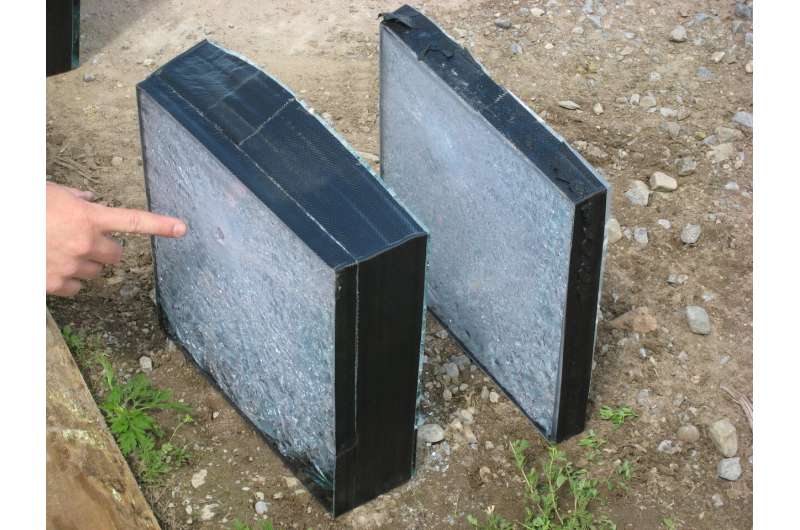Transparent ceramic armor provides superior ballistic protection over traditional glass laminates

Transparent aluminum, a technology first suggested in the science fiction film Star Trek IV: The Voyage Home, is now a reality.
With a growing need in the Department of Defense for transparent armor for personnel protection and infrared windows for reconnaissance applications, the Air Force Research Laboratory along with the Defense-wide Manufacturing Science and Technology program, support the manufacturing of aluminum oxynitride products providing greater system performance.
The transparent ceramic armor provides superior ballistic protection at less than half the weight and thickness over traditional glass laminates. This provides the warfighter with superior protection for both air and ground vehicles.
ALON is a transparent ceramic material composed of aluminum, oxygen and nitrogen. It begins as a powder that is formed into unique shapes and made transparent through the application of high temperature and pressure.
The Air Force Research Laboratory and the Defense Production Act Title III program have been working on this material since 2006 when DPA Title III was improving manufacturing processes to improve the powder that is used to form transparent armor and infrared sensor windows.
The DMS&T program is an investment mechanism that allows the department to advance the state-of-the-art for defense-essential manufacturing capability, through the development of technologies and processes necessary for the production of defense systems.
Prior to this program, the largest ALON window size was limited to 2.8 square feet. ALON is now manufactured routinely in sizes up to eight square feet by a small business, Surmet Corporation.

Scaling up is performed incrementally, due to the multitude of complex manufacturing steps that must be used in order for the process to be accomplished appropriately.
AFRL is demonstrating that they are moving closer to providing a commodity material for government capability as a result of this work.
"Obtaining eight square feet is an accomplishment that we have been working on for years and couldn't have done it without funds from AFRL and DMS&T as well as other organizations," said Richard Porter, Manufacturing Lead of the Manufacturing and Industrial Technologies Division, AFRL. "Manufacturing a larger window that is both lightweight and durable is an enormous enhancement in enabling the warfighter to fulfill the mission."
Transparent armor is currently used on U.S. Army Blackhawk and Chinook helicopters. ALON's excellent durability and impact resistance have made it of interest to NASA for Cupola scratch pane windows on the International Space Station.
The next step in protecting warfighters is creating a curved window. Curved ALON will be attempted, but the use of a different material may be required for this process.
As depicted in the Star Trek and Jurassic World movies, ALON was used in creating windows in a giant aquarium as well as protective bubble vehicle.
This effort demonstrates that science-fiction can become reality thanks to science and engineering.
Provided by Air Force Research Laboratory




















